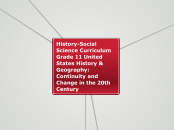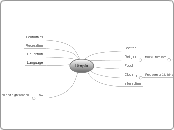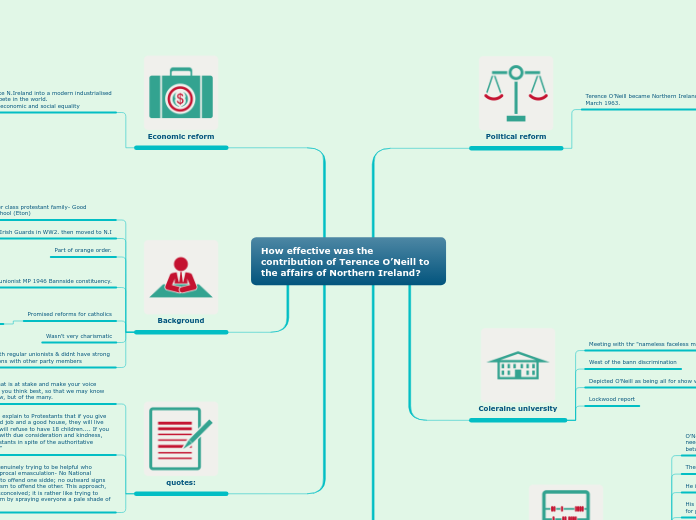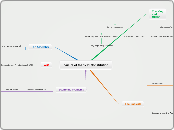History-Social Science Curriculum Grade 11 United States History & Geography: Continuity and Change in the 20th Century
Skills Attainment and Social Participation
Participation Skills
CCSS.ELA-Literacy.WHST.11-12.2d: Use precise language, domain-specific vocabulary and techniques such as metaphor, simile, and analogy to manage the complexity of the topic; convey a knowledgeable stance in a style that responds to the discipline and context as well as to the expertise of likely readers.
CCSS.ELA-Literacy.WHST.11-12.1a: Introduce precise, knowledgeable claim(s), establish the significance of the claim(s), distinguish the claim(s) from alternate or opposing claims, and create an organization that logically sequences the claim(s), counterclaims, reasons, and evidence.
CCSS.ELA-Literacy.RH.11-12.6: Evaluate authors’ differing points of view on the same historical event or issue by assessing the authors’ claims, reasoning, and evidence.
Critical Thinking Skills
CCSS.ELA-Literacy.RH.11-12.9: Integrate information from diverse sources, both primary and secondary, into a coherent understanding of an idea or event, noting discrepancies among sources.
CCSS.ELA-Literacy.WHST.11-12.1b: Develop claim(s) and counterclaims fairly and thoroughly, supplying the most relevant data and evidence for each while pointing out the strengths and limitations of both claim(s) and counterclaims in a discipline-appropriate form that anticipates the audience’s knowledge level, concerns, values, and possible biases.
CCSS.ELA-Literacy.RH.11-12.8: Evaluate an author’s premises, claims, and evidence by corroborating or challenging them with other information.
Basic Study Skills
CCSS.ELA-Literacy.WHST.11-12.8: Gather relevant information from multiple authoritative print and digital sources, using advanced searches effectively; assess the strengths and limitations of each source in terms of the specific task, purpose, and audience; integrate information into the text selectively to maintain the flow of ideas, avoiding plagiarism and overreliance on any one source and following a standard format for citation.
CCSS.ELA-Literacy.RH.11-12.1: Cite specific textual evidence to support analysis of primary and secondary sources, connecting insights gained from specific details to an understanding of the text as a whole.
CCSS.ELA-Literacy.RH.11-12.7: Integrate and evaluate multiple sources of information presented in diverse formats and media (e.g., visually, quantitatively, as well as in words) in order to address a question or solve a problem.
Democratic Understanding and Civic Values
Civic Values, Rights and Responsibilities
11.2.4: Analyze the effect of urban political machines and responses to them by immigrants and middle-class reformers.
11.2.9: Understand the effect of political programs and activities of the Progressives (e.g., federal regulation of railroad transport, Children's Bureau, the Sixteenth Amendment, Theodore Roosevelt, Hiram Johnson).
11.3.1: Describe the contributions of various religious groups to American civic principles and social reform movements (e.g., civil and human rights, individual responsibility and the work ethic, antimonarchy and self-rule, worker protection, family-centered communities).
Constitutional Heritage
11.1.3: Understand the history of the Constitution after 1787 with emphasis on federal versus state authority and growing democratization.
11.1.2: Analyze the ideological origins of the American Revolution, the Founding Fathers' philosophy of divinely bestowed unalienable natural rights, the debates on the drafting and ratification of the Constitution, and the addition of the Bill of Rights.
11.3.5: Describe the principles of religious liberty found in the Establishment and Free Exercise clauses of the First Amendment, including the debate on the issue of separation of church and state.
National Identity
11.8.2: Describe the significance of Mexican immigration and its relationship to the agricultural economy, especially in California.
11.10.1: Explain how demands of African Americans helped produce a stimulus for civil rights, including President Roosevelt's ban on racial discrimination in defense industries in 1941, and how African Americans' service in World War II produced a stimulus for President Truman's decision to end segregation in the armed forces in 1948.
11.10.7: Analyze the women's rights movement from the era of Elizabeth Stanton and Susan Anthony and the passage of the Nineteenth Amendment to the movement launched in the 1960s, including differing perspectives on the roles of women.
Main topic
Knowledge and Cultural Understanding
Sociopolitical Literacy
11.11.6: Analyze the persistence of poverty and how different analyses of this issue influence welfare reform, health insurance reform, and other social policies.
11.11.1: Discuss the reasons for the nation's changing immigration policy, with emphasis on how the Immigration Act of 1965 and successor acts have transformed American society.
11.10.2: Examine and analyze the key events, policies, and court cases in the evolution of civil rights, including Dred Scott v. Sandford, Plessy v. Ferguson, Brown v. Board of Education, Regents of the University of California v. Bakke, and California Proposition 209.
84. The Supreme Court in Brown v. Board of Education (1954)
A: permitted affirmative action in admission to colleges.
B: ended Bible reading and prayer in public schools.
C: outlawed racial segregation in public schools.
D: authorized schools to censor student newspapers.
Economic Literacy
11.6.4: Analyze the effects of and the controversies arising from New Deal economic policies and the expanded role of the federal government in society and the economy since the 1930s (e.g., Works Progress Administration, Social Security, National Labor Relations Board, farm programs, regional development policies, and energy development projects such as the Tennessee Valley Authority, California Central Valley Project, and Bonneville Dam).
11.6.2: Understand the explanations of the principal causes of the Great Depression and the steps taken by the Federal Reserve, Congress, and Presidents Herbert Hoover and Franklin Delano Roosevelt to combat the economic crisis.
46. Franklin Roosevelt’s immediate response to the banking crisis after becoming president was to
A: declare a bank holiday that closed banks in the United States for several days.
B: nationalize the banks to ensure they were following federal regulations.
C: establish the Federal Reserve to reduce the possibility of another bank emergency.
D: borrow money from foreign banks to support the U.S. banking industry.
11.7.8: Analyze the effect of massive aid given to Western Europe under the Marshall Plan to rebuild itself after the war and the importance of a rebuilt Europe to the U.S. economy.
Geographic Literacy
11.6.3: Discuss the human toll of the Depression, natural disasters, and unwise agricultural practices and their effects on the depopulation of rural regions and on political movements of the left and right, with particular attention to the Dust Bowl refugees and their social and economic impacts in California.
48. The large-scale movement of Great Plains residents to California during the Great Depression resulted in
A: an increase in wages for California laborers.
B: a decrease in the number of California residents seeking relief.
C: a significant decrease in the number of industrial workers in California.
D: a greater demand on available relief funds in California.
11.2.2: Describe the changing landscape, including the growth of cities linked by industry and trade, and the development of cities divided according to race, ethnicity, and class.
11.2.6: Trace the economic development of the United States and its emergence as a major industrial power, including its gains from trade and the advantages of its physical geography.
Cultural Literacy
11.8.8: Discuss forms of popular culture, with emphasis on their origins and geographic diffusion (e.g., jazz and other forms of popular music, professional sports, architectural and artistic styles).
11.5.6: Trace the growth and effects of radio and movies and their role in the worldwide diffusion of popular culture.
11.5.5: Describe the Harlem Renaissance and new trends in literature, music, and art, with special attention to the work of writers (e.g., Zora Neale Hurston, Langston Hughes).
40. The primary objective of Harlem Renaissance writers was to
A: encourage militant protest among African Americans.
B: support educational programs for African Americans.
C: improve literacy rates among African Americans.
D: generate pride in African-American culture.
Ethical Literacy
11.10.6: Analyze the passage and effects of civil rights and voting rights legislation (e.g., 1964 Civil Rights Act, Voting Rights Act of 1965) and the Twenty-Fourth Amendment, with an emphasis on equality of access to education and to the political process.
11.7.5: Discuss the constitutional issues and impact of events on the U.S. home front, including the internment of Japanese Americans (e.g., Fred Korematsu v. United States of America) and the restrictions on German and Italian resident aliens; the response of the administration to Hitler's atrocities against Jews and other groups; the roles of women in military production; and the roles and growing political demands of African Americans.
60. Partly because Japanese Americans living on the West Coast during World War II were considered security risks, they were
A: forced to give up their U.S. citizenship.
B: barred from military service throughout the war.
C: moved from their homes to internment camps.
D: prohibited by law from seeking employment with the federal government.
11.7.7: Discuss the decision to drop atomic bombs and the consequences of the decision (Hiroshima and Nagasaki).
Historical Literacy
11.7.1: Examine the origins of American involvement in the war, with an emphasis on the events that precipitated the attack on Pearl Harbor.
11.1.4: Examine the effects of the Civil War and Reconstruction and of the industrial revolution, including demographic shifts and the emergence in the late nineteenth century of the United States as a world power.
11.3.2: Analyze the great religious revivals and the leaders involved in them, including the First Great Awakening, the Second Great Awakening, the Civil War revivals, the Social Gospel Movement, the rise of Christian liberal theology in the nineteenth century, the impact of the Second Vatican Council, and the rise of Christian fundamentalism in current times.
24. The followers of the Social Gospel movement believed that organized religion must place greater emphasis on
A: reconstructing American society.
B: raising funds.
C: supporting the Populist Party.
D: stopping immigration to the United States.









